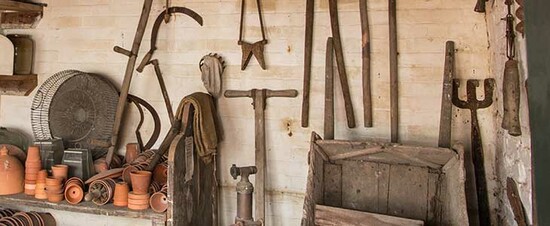Buying antique tools can be a great way to add charm and character to your home or workspace. Antique tools have a unique beauty that modern tools lack, which makes them the perfect addition to any collector's collection. In addition to their aesthetic value, antique tools also come with many practical benefits. They are often sturdier than their modern counterparts due to being crafted from higher-quality materials, making them more reliable when put into use.
Furthermore, buying antiques is an eco-friendly choice as it prevents these items from ending up in landfills and supports sustainable practices of reusing existing materials instead of creating new ones. With so many advantages associated with purchasing antique tools, it’s no wonder they remain popular among collectors today!
Hand planes tools
Hand planes are a type of tool with a long and interesting history. They have been around since the Stone Age and have been used by some of the world's most famous artisans and woodworkers in various forms over the centuries. Hand planes are perfect for shaping, planing, smoothing, rabbeting, and chamfering wood surfaces quickly and accurately. These tools consist of a metal body that houses a cutting blade made of either steel or high-speed steel.
This is held down to the wood surface via a lever cap or knob and is adjusted according to the desired depth of cut. The plane also features an adjustable mouth so that you can control how many shavings it removes from each pass. Hand planes are ideal for fine-tuning your workpiece as they allow for precise control over how much material is removed when planning away any irregularities on the surface of your project. Their sturdiness also makes them great for working with hardwoods like oak or walnut. Additionally, using hand planes requires practice, but once you've mastered them, you'll find that they create stunning results that no other type of tool can compare to.
Saws
Saws are an essential tool for any tradesman or hobbyist, and there are many different types of saws, including hand saws, mitre saws, circular saws, reciprocating saws, jigsaws and more. Hand saws are the most basic type of cutting tool, consisting of a metal blade with a thin handle attached. They come in various configurations depending on the intended use. Miter saws are capable of making precise crosscuts at a variety of angles and typically feature a rotating table and arm to move the blade along the workpiece. Circular saws have a round blade that is driven by an electric motor and is usually used alongside long guide rails for straight cuts.
Reciprocating saws have an oscillating blade that is powered by a motor and used for demolition tasks such as cutting through drywall or removing tree limbs. Jigsaws have blades that move up and down in a small range to cut intricate shapes. They can be handheld or mounted on a table to provide additional control when cutting curves and other shapes into wood or other materials. With so many different types of saws available, it's important to choose the one that best suits your needs when shopping for old tools.
Chisels & Gouges
Chisels and gouges are tools used by woodworkers, carpenters, and other tradespeople to carve out detailed shapes in wood. Chisels range from simple flat pieces of steel, usually with a handle attached, to ornate and highly specialized tools used for intricate masonry carving. Gouges are similarly made from steel but feature a curved blade that is typically used for scooping and hollowing out wood. Both tools can be found in any quality woodworker’s toolkit and represent an essential part of the craftsperson’s skill set. As well as being great for shaping chair legs, drawers or other components, chisels and gouges are ideal for creating decorative ornamentation on furniture pieces such as mouldings or door trim.
They can also be used for crafting intricate sculptures from blocks of wood. Specialised versions of these tools can offer even greater precision when making cuts at certain angles or depths in confined areas, however, it is important to remember that chisels and gouges require sharpening regularly if they are to remain effective over time. With the correct level of care and maintenance, these versatile tools can last many years providing reliable performance during all types of workmanship projects.
Hammers & Mallets
Hammers and mallets are essential tools in any toolkit. Hammers come in various sizes, weights and head shapes and are used for driving nails into objects such as wood, metal or stone. Mallets are heavier than hammers and have a round head which is used to generate force when striking an object without damaging it. While hammerheads can be made of steel, bronze, copper or titanium alloys, mallet heads are typically made of rubber, wood or plastic with a dense core material such as lead.
Old hammers and mallets often feature more detailed craftsmanship compared to modern alternatives due to the increased focus on quality instead of quantity. The handles on vintage hammers and mallets were often made out of hickory wood which was able to handle the rigours associated with fatigue that occur while using these tools regularly. Even after years of extensive use, these items remain reliable tools that can last for many generations if maintained properly.


Comments
There are no comments yet. Login or Register and write an article comment